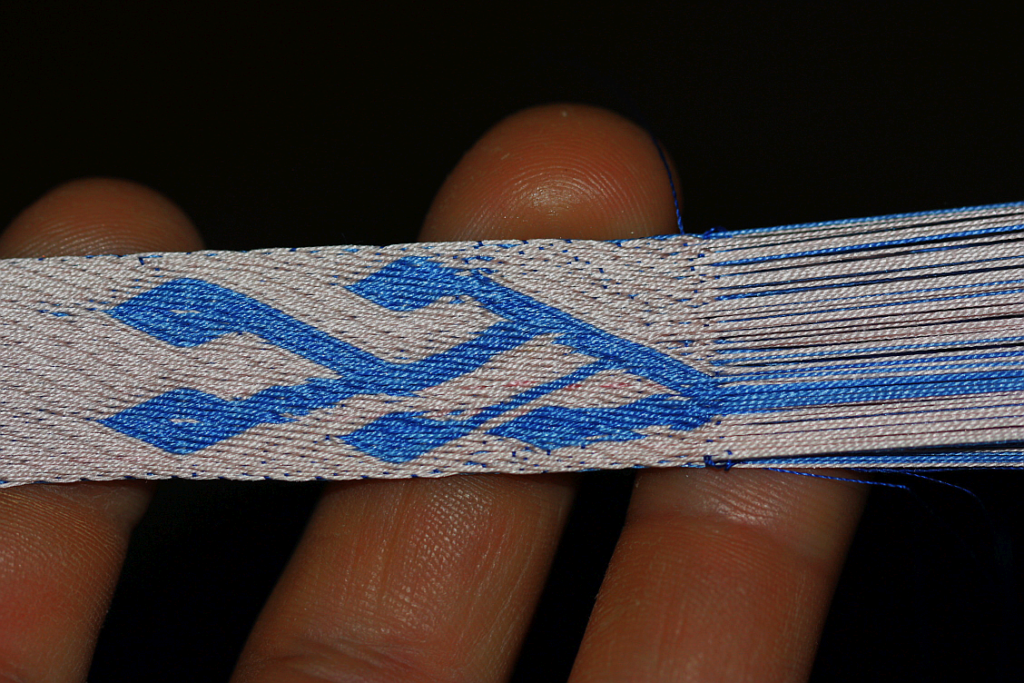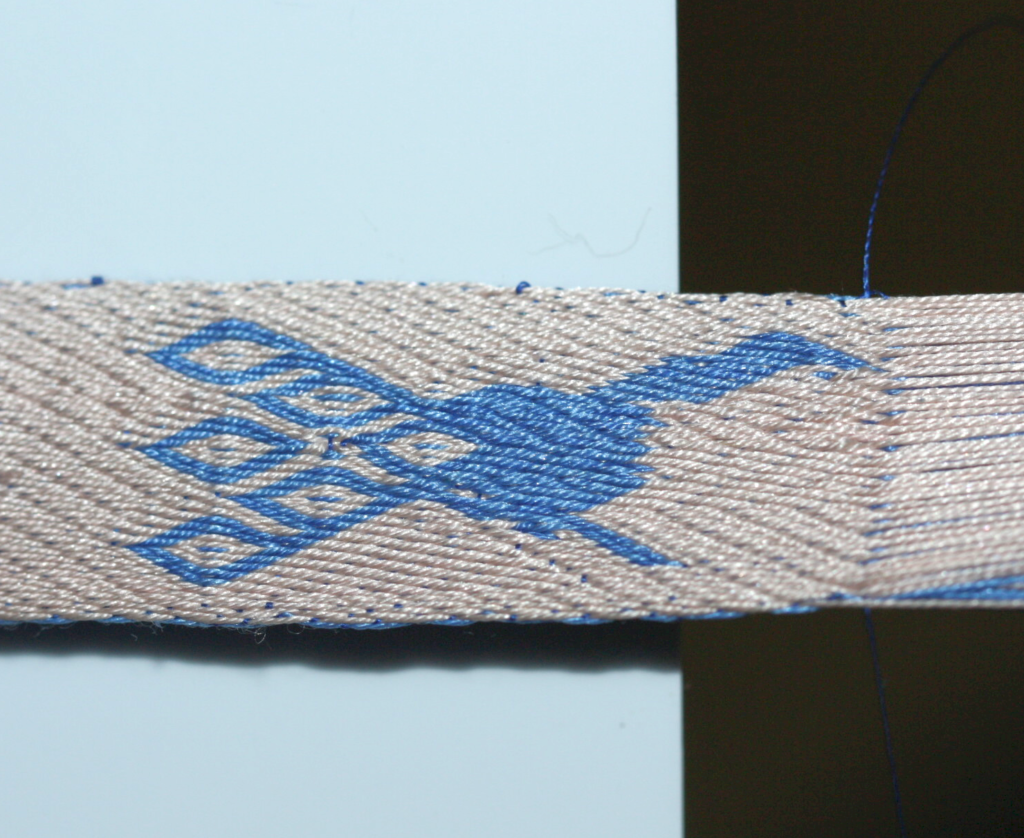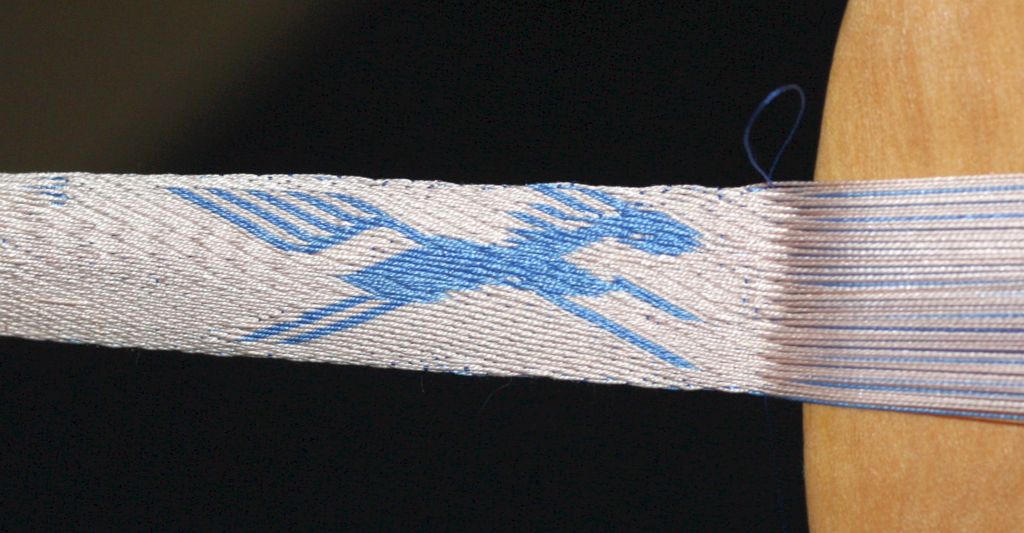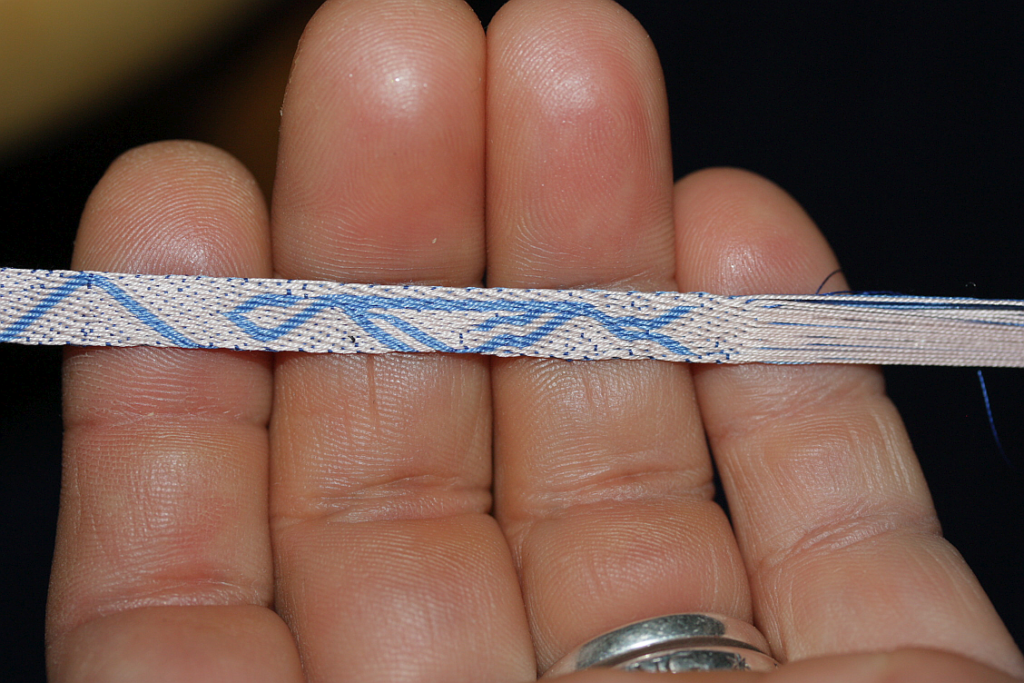Things going on?
Prep for the Textile Forum - writing lists, making plans, figuring out stuff, and generally getting really excited.
Also... more weaving. Currently I'm trying to get merging lines down pat, so the idea was to weave a tree (inspired by one of the Arlon motifs) and follow that with a bee (which is perfect for trying a few other things that serve as design elements).
Well. Merging lines. That means you have one line coming from the left, and one from the right, and the main turning direction of these lines is not the same, so one basically has to eat the other one. In theory, I got this. In practice, I thought I had it at one point... and then I wanted to repeat it and I got horribly, horribly muddled up. Maybe it was too many things at once...

...because I wanted to try starting multiple diamonds at the same time on the free side of the band. Well. That did not go as planned.
You can see in the picture that things got really, seriously wonky. Ah well. I'll make the tree a little taller... and try again. (In theory, I know exactly what I have to do. In practice, somehow, things sort of get out of hand occasionally...)
Prep for the Textile Forum - writing lists, making plans, figuring out stuff, and generally getting really excited.
Also... more weaving. Currently I'm trying to get merging lines down pat, so the idea was to weave a tree (inspired by one of the Arlon motifs) and follow that with a bee (which is perfect for trying a few other things that serve as design elements).
Well. Merging lines. That means you have one line coming from the left, and one from the right, and the main turning direction of these lines is not the same, so one basically has to eat the other one. In theory, I got this. In practice, I thought I had it at one point... and then I wanted to repeat it and I got horribly, horribly muddled up. Maybe it was too many things at once...

...because I wanted to try starting multiple diamonds at the same time on the free side of the band. Well. That did not go as planned.
You can see in the picture that things got really, seriously wonky. Ah well. I'll make the tree a little taller... and try again. (In theory, I know exactly what I have to do. In practice, somehow, things sort of get out of hand occasionally...)







 The two light triangles on the left are woven with the directional change at the start of the pattern, the ones to the right with the change at the end.
The two light triangles on the left are woven with the directional change at the start of the pattern, the ones to the right with the change at the end.